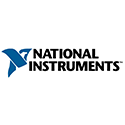TSP #232 - Near-THz Sub-Harmonic Mixers (Tektronix 75 - 140GHz) Tutorial, Teardown & Experiments
31.4K views
August 12, 2023 7:05 PM
In this episode Shahriar takes a deep dive into near-THz sub-harmonic mixers. To demonstrate the concepts, measurements and teardowns a set of Tektronix Sub-Harmonic mixers have been acquired (WM 490-F & WM 490-W) which operate from 90-140GHz & 75-110GHz respectively. This video is organized as follows:
00:00 – Introductions
00:50 – Acquired near-THz sub-harmonic mixers & diplexers
01:26 – Theoretical background, non-linear devices, harmonic generation
06:05 – Spectrum analyzers utilizing sub-harmonic mixers, signal ID
08:27 – Tektronix sub-harmonic mixer design, schematic & principle of operation
15:11 – Mixer diode characterization using Keithley SMUs & I/V tracer application
19:59 – Mixer teardown, analysis and microscope view of THz diode
28:07 – Diplexer architecture & characterization using a 4-port Siglent network analyzer
33:24 – Complete near-THz down-conversion setup using a x6 mm-wave multiplier source and Tektronix MSO68-B oscilloscope, conversion loss, harmonic number verification, signal ID process
45:35 – Using a ~100GHz carrier to determine the RPM of an optical chopper
48:15 – Concluding remarks
Please consider supporting The Signal Path:
https://www.TheSignalPath.com/Donate
https://www.Patreon.com/TheSignalPath
Other links:
https://www.TheSignalPath.com
https://www.Twitter.com/TheSignalPath
TSP #231 - Sanko BN100+ 300kHz - 6.5GHz USB Vector Network Analyzer Review, Teardown & Experiments
19K views
August 7, 2023 6:28 PM
In this episode Shahriar reviews the Sanko BN100+ USB vector network analyzer which has been designed in partnership with Bird RF:
https://www.sankorf.com/products/bn100-plus
The review is organized as follows:
00:00 – Introductions
00:27 – Instrument front & back panels
02:15 – Teardown, internal architecture, front-end coupler design
06:03 – Firmware distribution
06:36 – VNA output signal performance, sweep types, sweep speed, harmonics (THD), power sweep
14:00 – Calibration, built-in models, calibration procedure & standards
15:35 – Port to port isolation, noise floor, minimum detectable response
16:18 – Extreme filter dynamic range measurements
18:07 – VGA measurements, dynamic s-parameters, trigger in/out
24:11 – Time domain analysis, impulse response measurements
26:27 – Frequency accuracy measurements
27:01 – Concluding remarks
http://www.TheSignalPath.com
http://www.YouTube.com/TheSignalPath
http://www.Patreon.com/TheSignalPath
TSP #230 - A Real-Life Tricorder! Agilent Raman Resolve Through-Barrier Chemical Analyzer
34.5K views
July 20, 2023 6:49 PM
In this episode Shahriar takes a close look at the Resolve Handheld Raman Analyzer for Chemical Identification from Agilent. This instrument resembles a real-life Tricorder with its ability to identify chemicals through various opaque containers.
https://www.agilent.com/en/product/molecular-spectroscopy/raman-spectroscopy/handheld-raman-chemical-detection-systems/resolve-handheld-raman-analyzer-for-through-barrier-chemical-identification
This video explores every aspect of this instrument’s design from principle of operation to the modern electronics required to realize its function. The video is organized as follows:
00:00 – Introductions & first through-barrier scan example
02:46 – Raman history, invention & Nobel prize
04:41 – Infrared absorption, Raman spectroscopy theory, challenges and importance of fluoresce
10:49 – Fluorescence example & measurement using Uranium glass & HeCd laser
15:21 – Other applications of fluorescence such as microscopy
16:48 – Nonlinear optical effect and frequency doubling crystals, measurement of green laser
20:13 – Other applications of nonlinear optics, autocorrelation instrument to measure femtosecond pulses
23:18 – Electron excitation of atoms to produce photon emissions using Helium & Neon gasses
24:23 – Components required to build a Raman spectrometer
25:15 – Monochromator & spectrometer architectures, limitations & design
29:07 – Agilent Raman Spectrometer overall architecture, Raman chemical fingerprints
31:10 – Spatially Offset Raman Spectroscopy (SORS) theory & application
32:43 – Agilent Raman Resolve use-cases, accessories and application scenarios
36:03 – Measurements & identification of spilled unknown powders & liquids
40:53 – Through-barrier plastics & glass measurement of mixed liquids & acids
42:52 – Agilent Resolve extensive library & material categories, Reach-back support
44:03 – Chemical identification examples using the Vial accessory
47:26 – Trace chemical concentration & sensitivity measurement
48:34 – Concluding remarks
Data TNG image credit:
https://www.startrek.com/article/cosplaying-data-star-trek-next-generation
http://www.TheSignalPath.com
http://www.YouTube.com/TheSignalPath
http://www.Patreon.com/TheSignalPath
TNP #38 - SourceTronic ST2516 Micro-Ohm DC Resistance Meter Teardown, Modifications & Experiments
21.1K views
July 6, 2023 8:31 PM
In this experiment Shahriar modifies a SourceTronic DC resistance meter due to its incredibly loud built-in buzzer. The instrument can sink up to 1A through a DUT and therefore measure down to micro-ohm resolution. The instrument also has offset voltage compensation capability to eliminate thermoelectric effects from bimetal contacts to the DUT. A direct measurement of the DUT current shows how the instrument is able to do this task in the background while measuring low resistances.
http://www.TheSignalPath.com
http://www.YouTube.com/TheSignalPath
http://www.Patreon.com/TheSignalPath
TSP #229 - Stanford Research DS360 Ultra-Low Distortion Function Gen. Repair, Teardown & Experiments
29.2K views
July 4, 2023 9:27 PM
In this episode Shahriar takes a look at a faulty SRS DS360 ultra-low distortion function generator. This instrument is capable of producing pure sinusoids with better than -110dB of THD!
Although the unit powers on, changing the frequency or output signal does not result in any internal relay switching and the instrument does not produce any output signal.
The block diagram of the instrument as well as the theory of operation is described before the teardown. The teardown also shows the two board design and the interface between the digital/analog boards. The fault is finally traced to a broken optoisolator IC between the two boards. Without this interface IC none of the configuration parameters from the digital board arrive to the analog subsection. The faulty part is replaced and the unit is restored. The difficult measurement of the THD is also presented using an SRS SR830 DSP lock-in amplifier.
http://www.TheSignalPath.com
http://www.YouTube.com/TheSignalPath
http://www.Patreon.com/TheSignalPath









